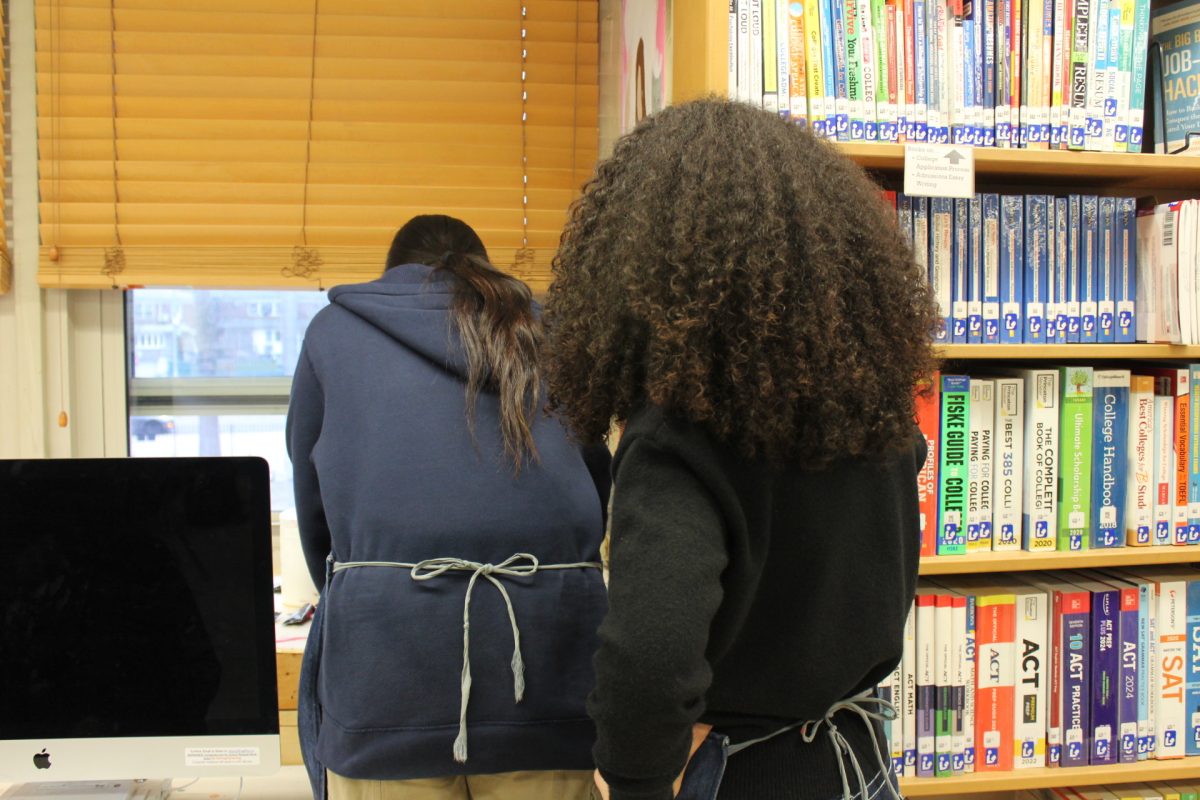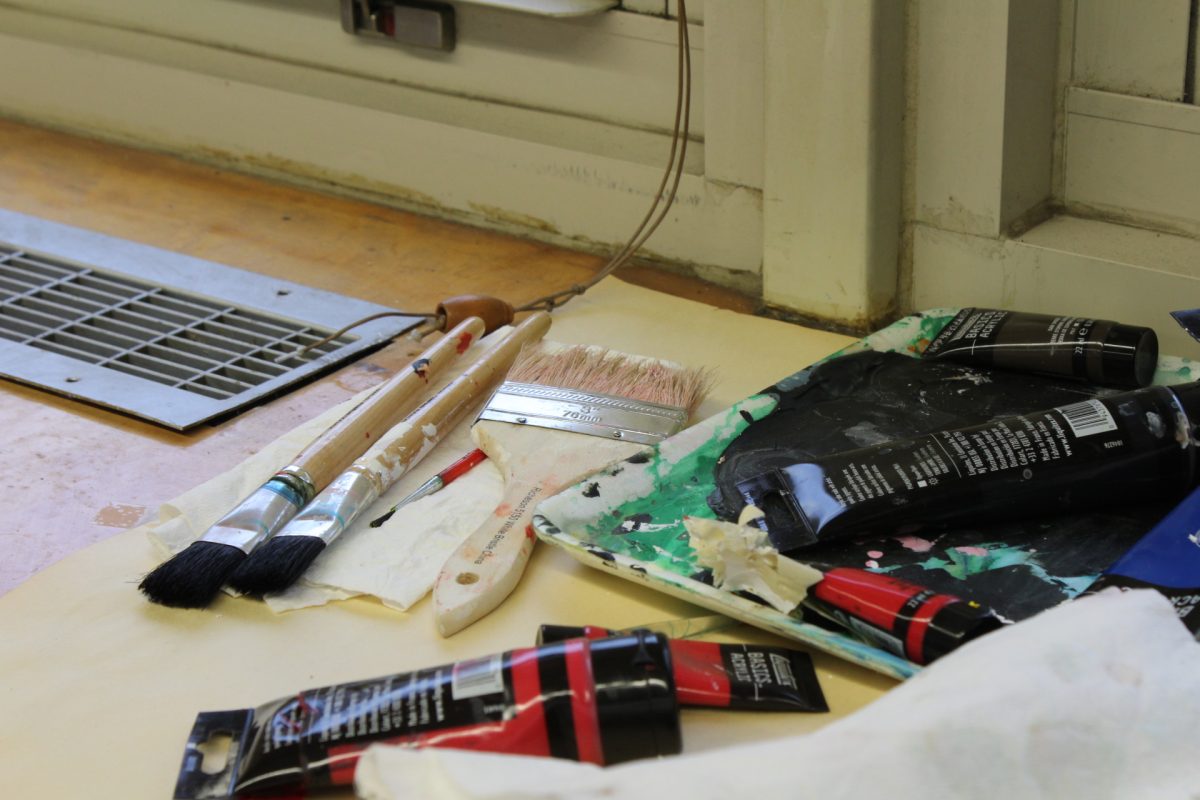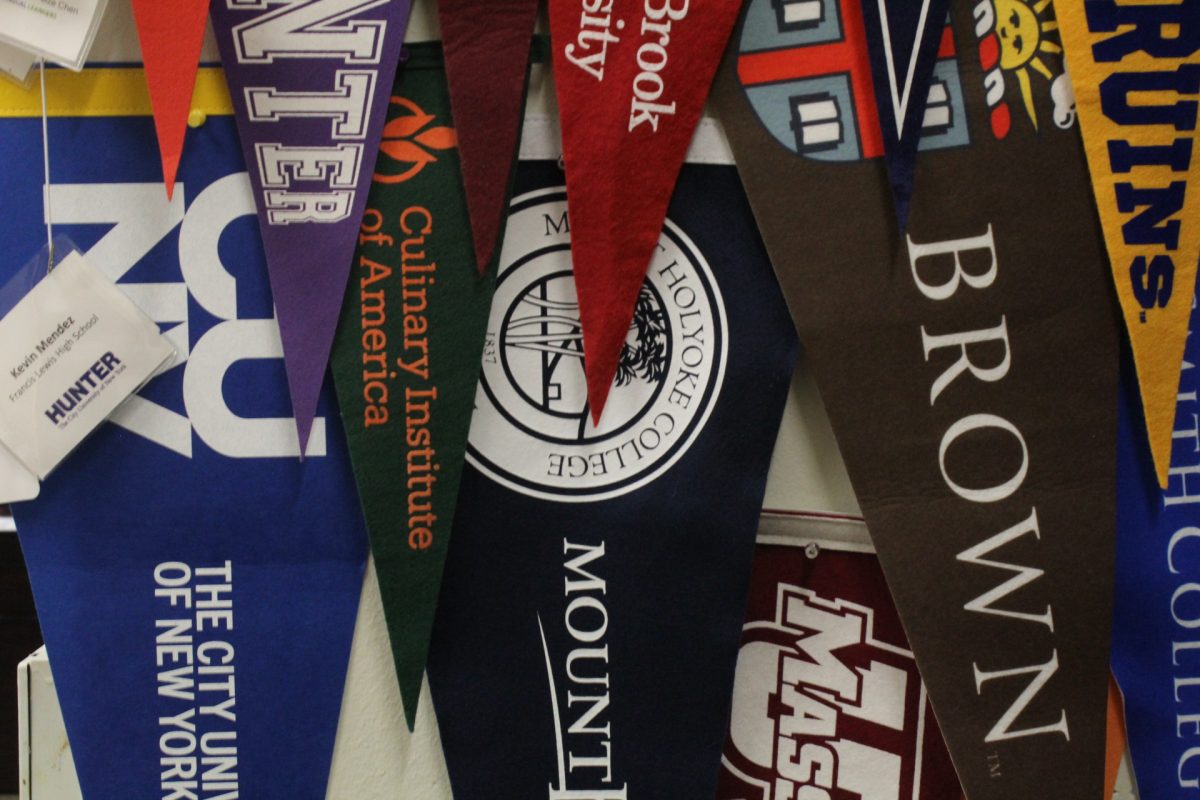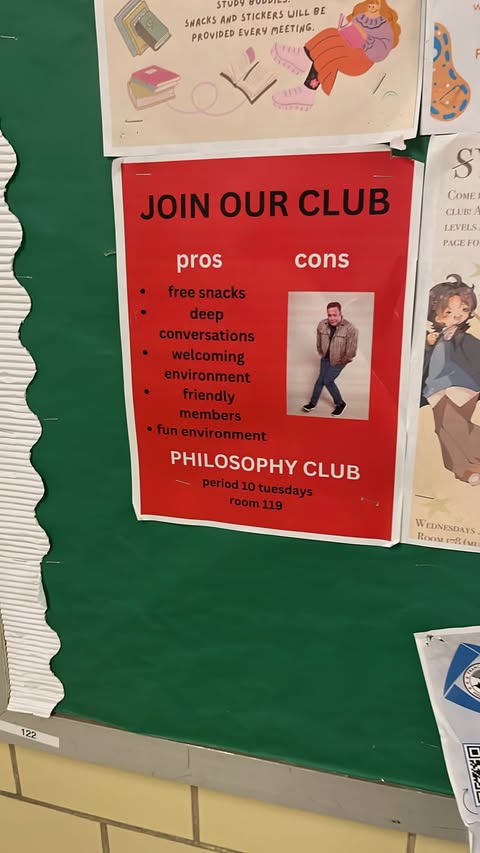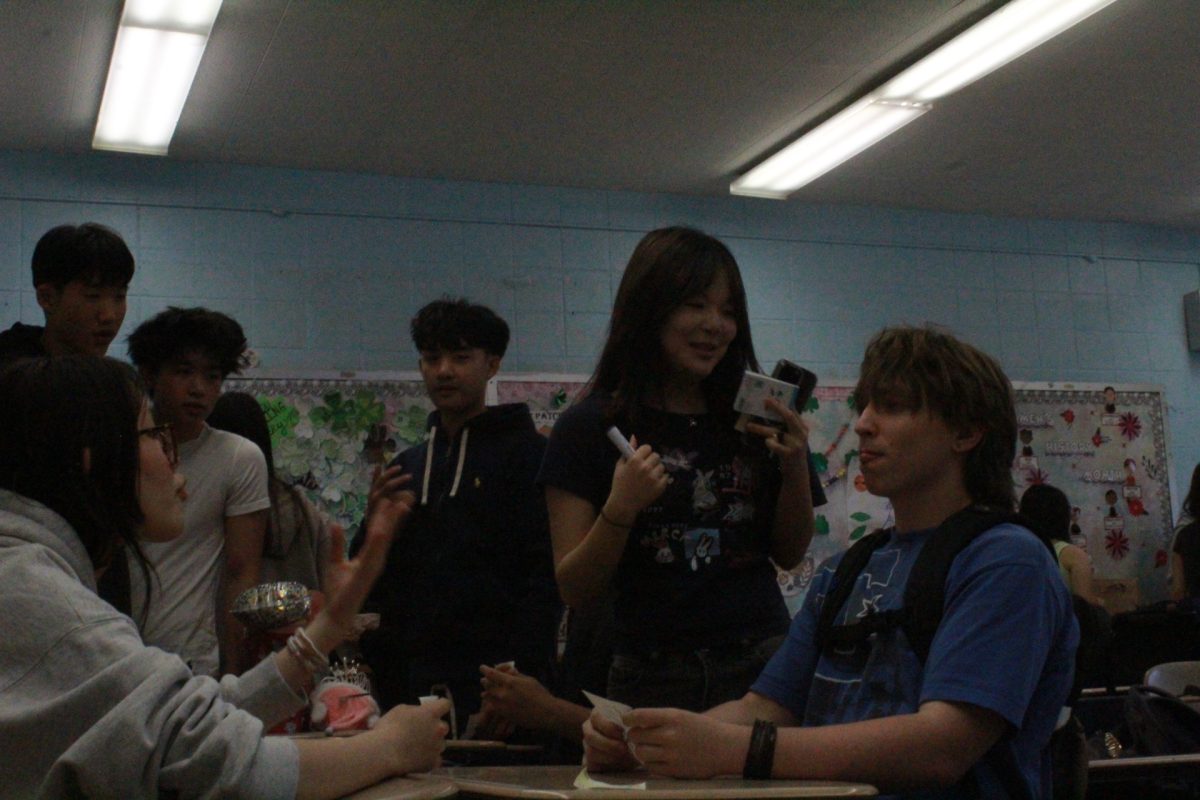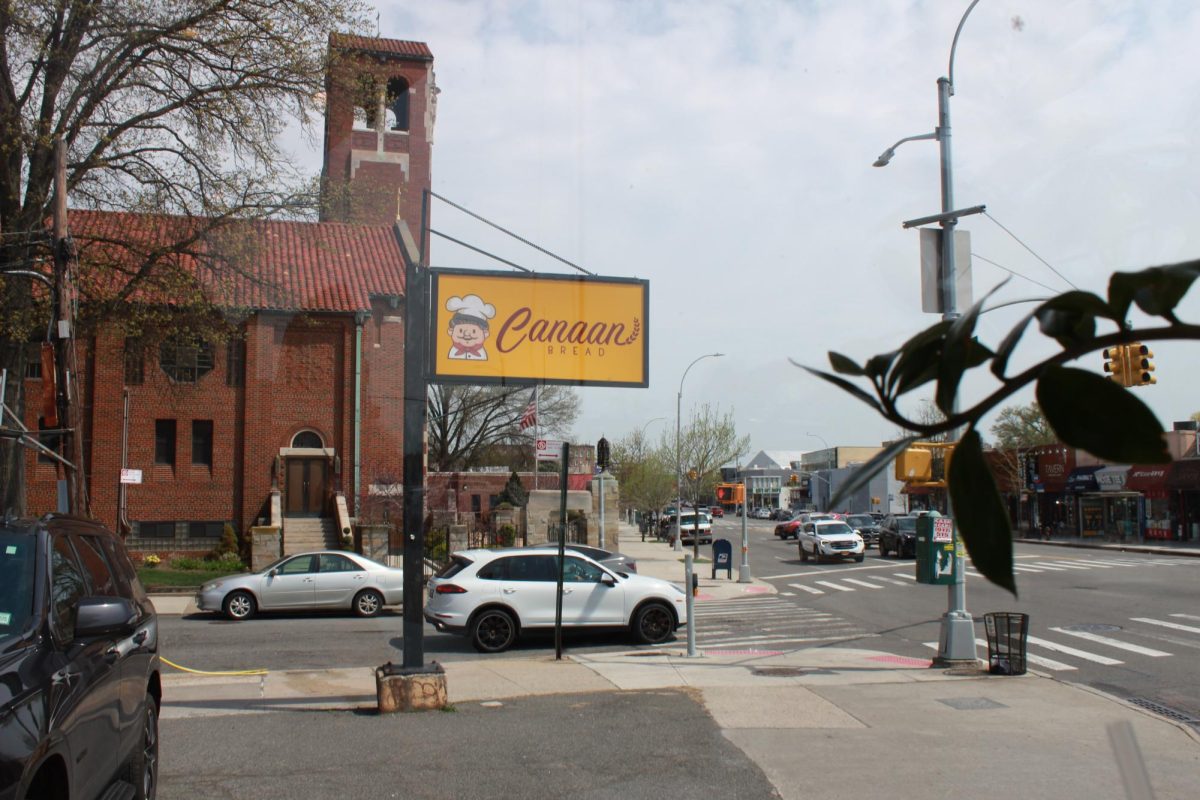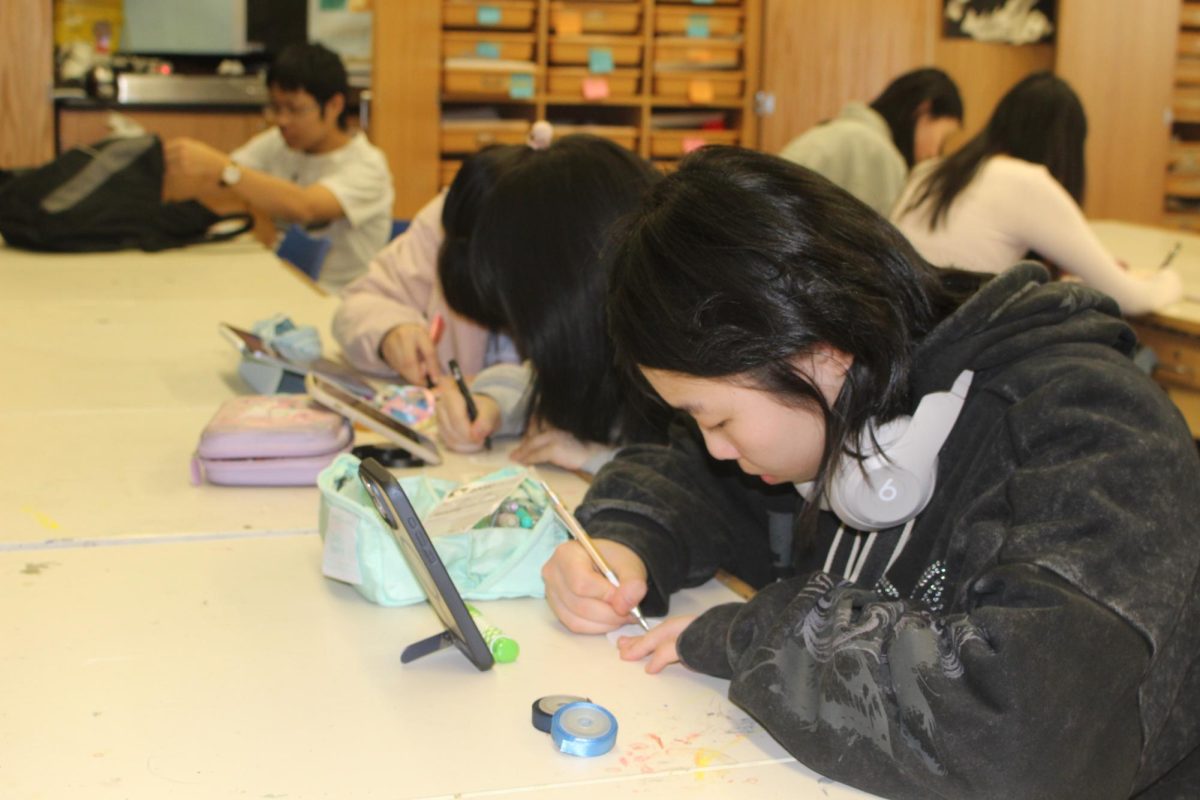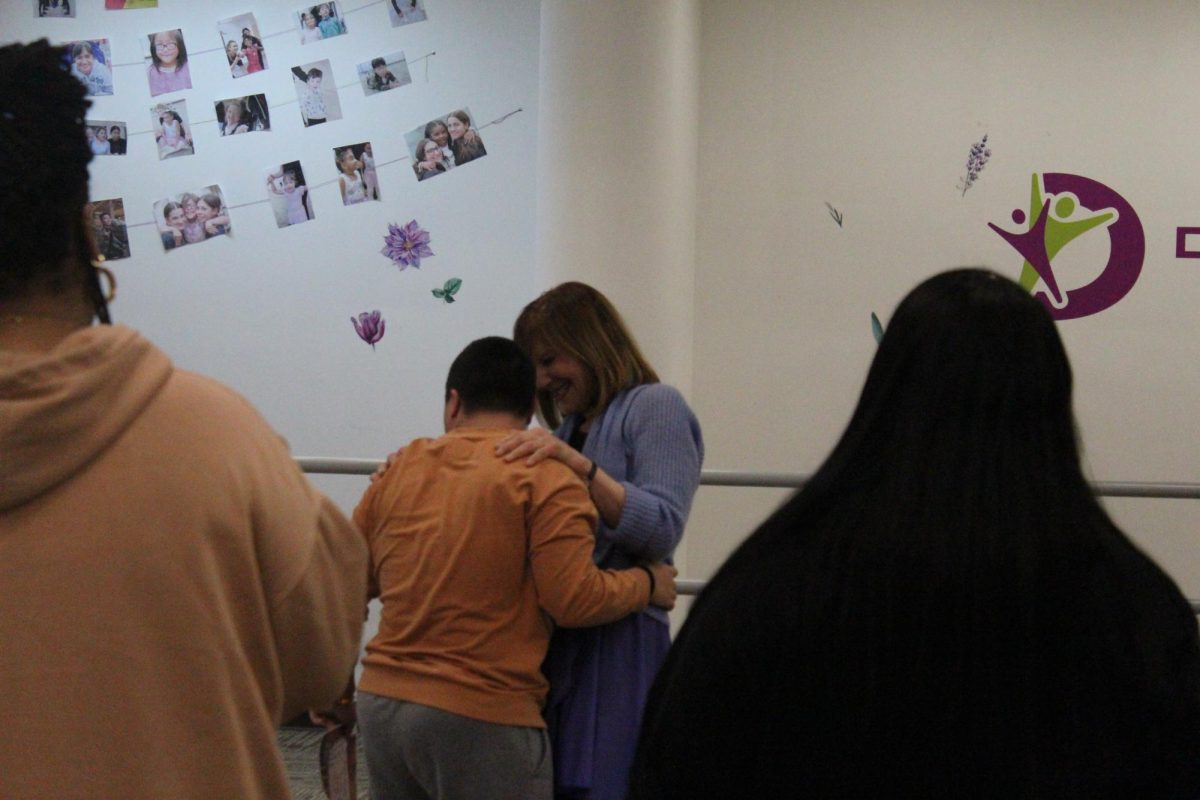For many students, school can feel like an endless cycle: attending classes, completing assignments, studying for exams, and repeating the process. This routine can be daunting and stressful, prompting students to seek ways to make school more engaging and enjoyable. While joining teams or clubs is a common recommendation to expand social circles and gain new experiences, freshmen April Han and sophomore Malak Abukoush have taken a different approach by reviving a long-forgotten opportunity: painting a mural in the school library.
Han and Abukoush, who both do not claim to be artists, took on this project “just for fun”. Starting from the drawing board to painting in the library, the two just wanted one thing in common– to be recognized in their new school community. But if the two are not a part of the school’s art program or art club, how could the two have possibly started all of this?
It all started with Han, who got the idea simply from her observations and the influence of others.
“I saw drawings all around the library and certain rooms at the beginning of the school year,” Han recalled. “My teacher said she wanted to repaint her entire classroom, and so I asked if I could help. But then she was like, ‘Actually, you can paint in the library because they let you.’ So, I spoke with [the librarians] and I started painting.”
With an idea of what she wanted to do, Han took action for her idea.
“I was so excited to hear that there was someone who actually wanted to carry on a mural,” Ms. Christina Vittiglio, one of the school librarians said. “For years, it had kind of just gone dormant.”
Han’s idea to start painting in the library was a chance for her to have fun with art, let loose during school hours, and surround herself with people who make her happy.
“I just wanted to paint, show off my work and have my friends be there,” Han explained. “[My friends] actually motivate me to keep going and going. It’s fun when I paint with them because it lets me spend time with them.”
One friend in particular, Abukoush, saw what Han was doing as an opportunity and decided to join her on her journey.
“Well, we were already kind of friends and I just felt like doing this,” Abukoush said. “I don’t have an art background, I’m not good with art, but I thought I’d just tag along and I don’t regret it at all. I feel like doing these fun little things that you wouldn’t usually think to do, if not being convinced by another person, it teaches you a lot and allows you to meet new people.”
Students had painted murals in the library many years ago, so the art teachers were familiar with the process, making it easy for Han to obtain materials.
“I got the art supplies from the art room and art closet,” Han said. “Apparently, all the past kids that have painted in the library have used their supplies. For example, I’m using the school’s paint brushes, a type of wall-base, acrylic paint, palette, and markers.”
With Abukoush and a few others popping in while Han planned and started painting the mural, she noticed that there were both benefits and disadvantages to having companions.
“Working alone, of course, it’s gonna be less crazy, you can do your own thing,” Han explained. “But at the same time, there is no motivation when no one is there to cheer you up, you just need to work there by yourself, kind of lonely. If you work in a team, you might get it done faster since working alone takes a long time. It may be more hectic to get together, but it’s nice having a friend around.”
Not only were friends a form of motivation that kept Han’s going, it also gave Han the feeling of acceptance and the chance to make the school more lively.
“It makes me happy because I can draw on the wall and not every school lets you do that,” Han exclaimed. “I know that some schools look really fancy, like a castle, but they don’t let anyone draw on the walls. Although the school looks fancy, it doesn’t look as creative but instead bland.”
As for Abukoush, helping Han with the project allowed her to expand her ways of expression.
“I mean I kind of express my artistic styles in other ways, I like to knit, I like to make sweaters and scarfs– I learned it from my mom,” Abukoush described. “So, I think overall, I go towards more creative projects if I know it’s a way for me to connect with others.”
Not only does this freedom benefit the artists, but it also has an impact on staff and other students. With new art, comes new connections and ambience.
“When kids are sitting at tables, there is always a moment where they take a break, and they sometimes are plugged in, so they hear what they want to hear, in terms of music or whatever they are watching,” Ms. Vittiglio said. “But the one thing that we can control is what they can see, and the artwork is one of the things they can see. I think that’s kind of like the domino effect of a kid seeing the artwork and then wondering, Who did that?, or Can I do that? – which creates a sense of community, that they are a part of the school. I think it helps kids realize that they can paint on these walls because their walls are for them, the library is for them, not me. It fills me up with the love and energy I need to keep going to pursue more student engagement and community building.”
Art in a way is interactive, even just by looking at it; murals like Han’s can lead to curiosity, while at the same time, a sense of warmth for students who come to the library.
“To me, the significance of having students work in the library is being able to do homework and appreciating the artwork at the same time,” Junior Yan Ying Feng, who often goes to the library during 10th period, said. “It makes the atmosphere of the library more relaxing and calm, and the artwork also impacts me because when I’m stressed while doing homework or stressed about school in general, I just could look up and see all the artwork in front of me and that makes me feel better.”
On top of that, being able to do art for the school makes you a “contributor” as Ms. Vittiglio pointed out. “You are a part of art, and it lasts for a long time.” Referring back to the domino effect, the mural can influence other students to create new art for the library and other parts of the school building in the future.
“I know another friend who asked me, ‘You can do this?’,” Han recalled. “Now he might actually want to work on a wall piece as well because they didn’t know that they would be able to do it.”
Han agrees, and thinks it’s an opportunity to venture out of the regular school curriculums and school life, while still having the chance to experiment with art that will be seen by many people.
“Considering that our school only has two art classrooms, it’s really limited,” Han said. “But if students have opportunities to do art projects on the actual the school building, outside the classrooms, people are going to stop and notice and I think that will make kids happy because they are getting recognized, their art is being recognized.”
Art, no matter where it is and who it is created by, is a tool to articulate emotions and messages. The school building is like a blank piece of paper. By allowing students to paint and create public murals, student voices and passions are amplified.
“I think in any situation, where art or creative projects should be encouraged because they are a way to express emotions, they could express what is going on in the current world,” Abukoush explained. “It’s just a great way, especially with students to create, I mean 5000 kids, there should definitely be more opportunities.”



